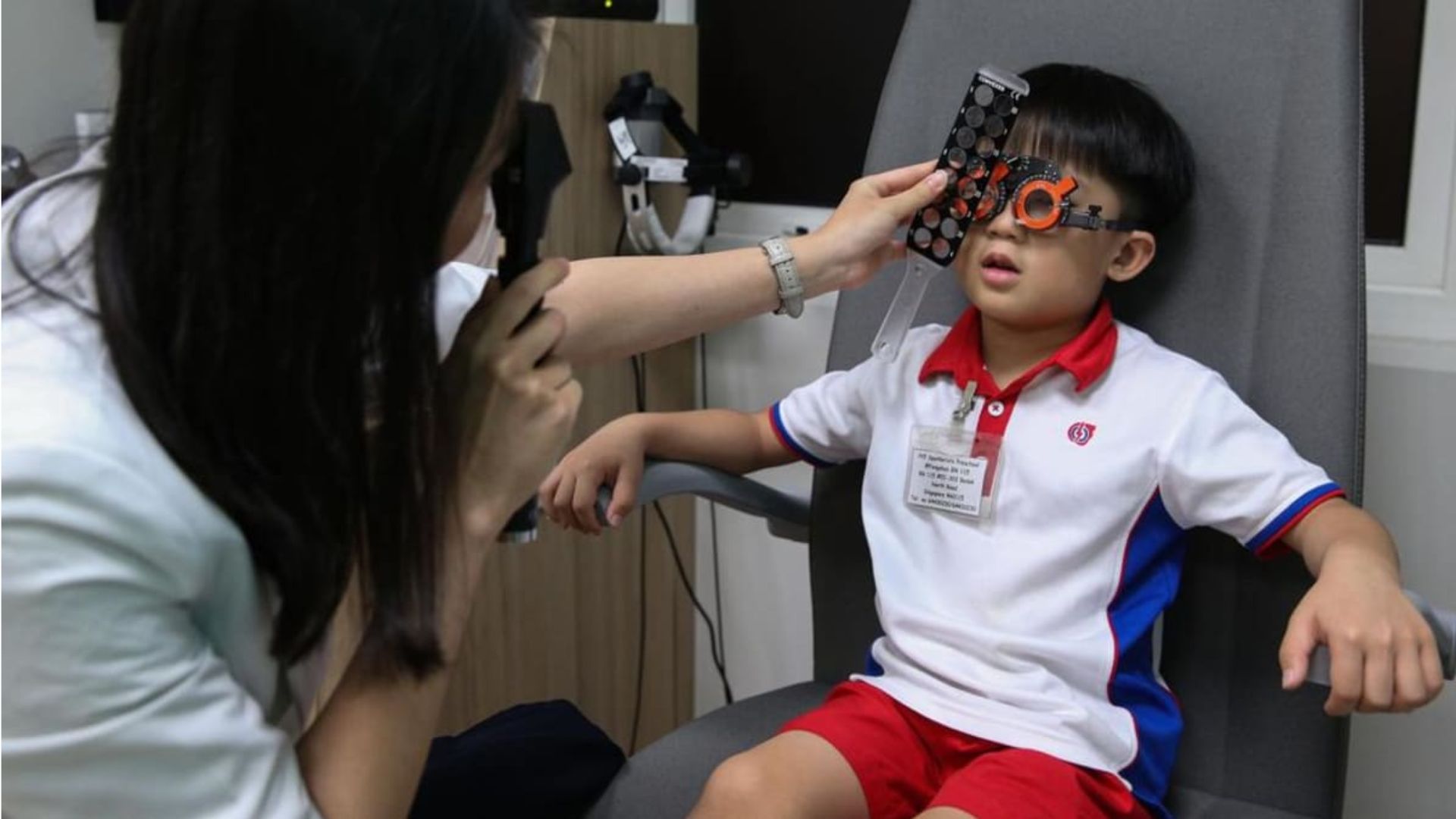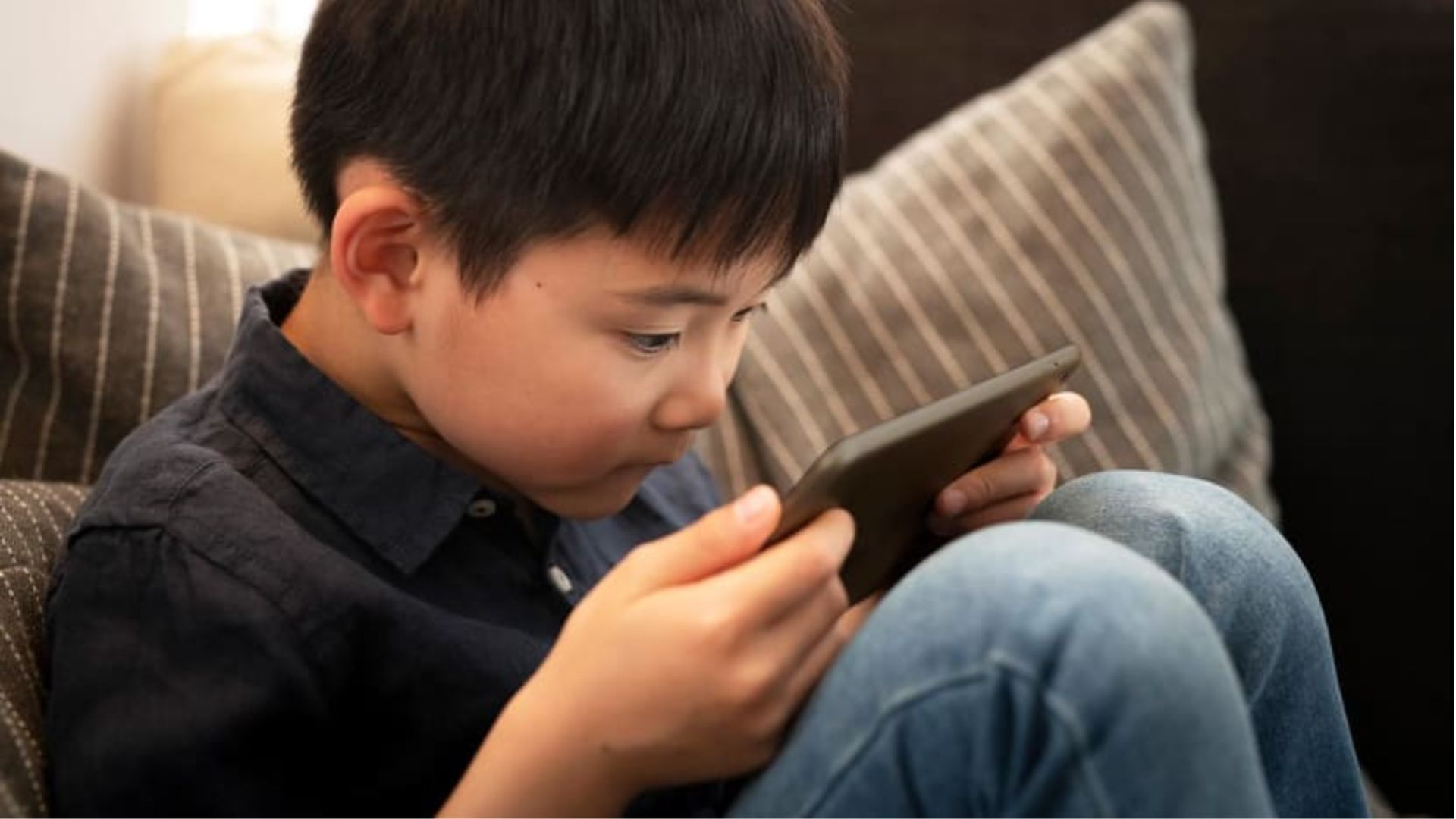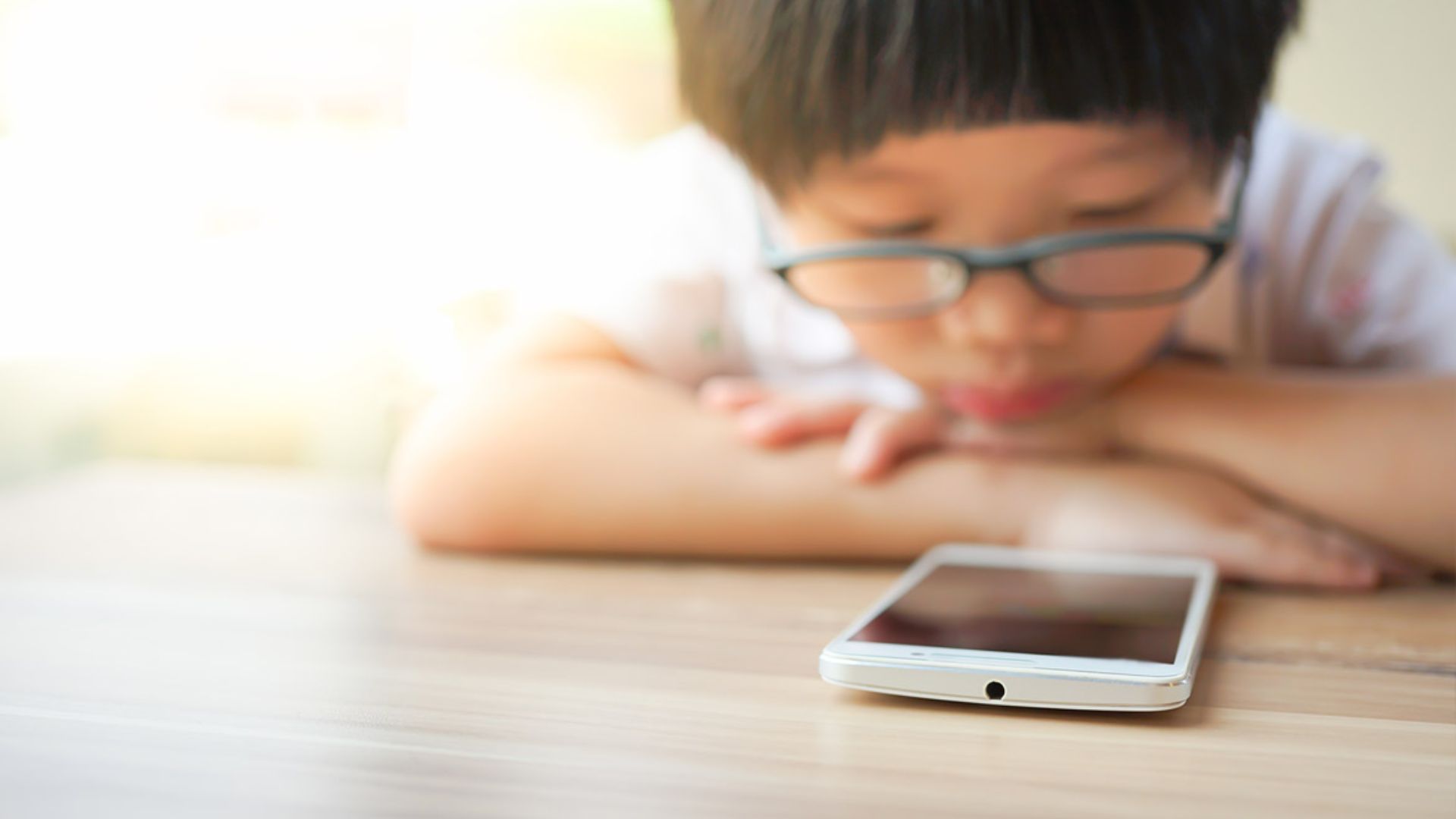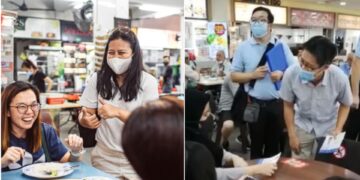Not too long ago, kids with glasses were the odd ones out.
Today, bespectacled children are increasingly becoming the norm in Singapore, making the prevalence of myopia here among the highest in the world.
Data from the Health Ministry (MOH) shows that more than 65 per cent of children here are myopic by the time they turn 12, and in young adults, this figure is 83 per cent. And by 2050, it is projected that between 80 and 90 per cent of all Singaporean adults will be myopic. Of these, up to a quarter may have high myopia, which is defined as myopia of 6.00 diopters (600 degrees) or greater in each eye.

Myopia typically starts in childhood or adolescence and continues progressing into the 20s when the eyes are fully grown. Myopic individuals have eyeballs that are slightly too long. This deformity causes images to fall in front of the retina, rather than directly on it, making objects that are far away appear blurry.
A report in Scientific American said some of the first evidence that a myopia epidemic was underway came from studies of boys in National Service in Singapore. Because the two years of military service is mandatory for all young men and all the recruits have their eyes tested, researchers could look at nearly the entire male population.
Over the years, the data revealed a dramatic rise in shortsightedness: 26 per cent in the late 1970s, 43 per cent in the 1980s and 83 per cent by the late 1990s.
“We think the huge generational effect [occurred] because about 50 years ago, the school system was different—it was not so intensive. If you just speak to the older and the younger generations about what they did when they went to school, you know that the lifestyle has changed tremendously,” said Professor Saw Seang Mei, who heads the myopia unit at the Singapore Eye Research Institute (SERI).
Senior technical director of contact lens manufacturer Menicon Steve Newman tells TheHomeGround Asia that the pressure of academic success drives Singaporean children indoors and onto near work, pushing up the number of short-sightedness among young adults to more than 4 in 5.
Already having the title of the myopia capital of the world, it is predicted that between 80 and 90 per cent of Singapore adults will be shortsighted by 2050. Currently seven per cent of five-year-olds here have to wear glasses and this number goes up to 65 per cent among the 12-year-olds.
Director of Myopia Specialist Centre Stan Isaac adds, “At this rate of around 90 per cent myopia levels, we will find a lot of individuals in their mid-20s with myopia-related pathology. This is especially so if we do not have enough experts to contain the situation.”
Covid-19 pandemic pushing up myopia prevalence
Within the new ways of living and learning, eye doctors are concerned about the impact these modern routines could have on childhood myopia and its progression, especially when it comes to the recent Covid-19 lockdown and near work due to learning from home.
Dr Isaac says the pandemic has affected more than just the wellbeing of those who were infected by the virus. The lifestyle changes adopted by those living in Singapore as a result of the Circuit Breaker have contributed to a sharp rise in the number of children suffering from myopia and the severity of the disease.
Data from Stan Isaac Optometrists point to the increase in usage of electronic devices and the reduced time spent outdoors that contributed to the worsening of the myopia situation here.
Dr Isaac’s clinic reported a sharp increase in both numbers and severity of myopia among children between the ages of seven and 12 when comparing pre-pandemic and post pandemic data.

Out of the over 1,000 patients seen at the clinic from January to December 2019, more than 14 per cent needed myopia intervention. The number doubled after the pandemic. Between June 2020 and June 2021, more than 1 in 4 needed intervention.
“It is no coincidence that the spike in numbers took place during the height of the pandemic in Singapore. The Circuit Breaker forced education to go online with Home-based Learning (HBL) and people were encouraged to stay indoors. That saw more kids spending more time on electronics like mobile devices and game consoles instead of going outdoors,” Dr Isaac says.
Prof Saw affirms that the rate of progression for short-sightedness during the Covid-19 lockdown was faster.
“We have completed an evidence-based review of the top studies worldwide and the results show that. The children spent less time outdoors and more time on nearwork, especially screen time during the lockdown. As environmental factors are the main determinants of myopia and there are primarily only two major ones, they should have an effect on myopia development and progression,” she tells TheHomeGround Asia.
Mr Newman adds that not only nearwork such as reading and e-learning for longer periods cause the eyesight to deteriorate, “spending longer hours on nearwork using under-prescription glasses also exacerbates the situation. Because of the lockdown, there was no way for parents to take their children for the regular eye exam”. It is recommended that children should have eye checks every six months to make sure their myopia is not worsening, he adds.
Singapore numbers mirror a global trend
A large-scale study in China, conducted by the Wenzhou Medical University on over a million children aged seven to 18, found that from June 2019 to June 2020, overall myopia prevalence went up from about 53 per cent to almost 60 per cent.
It also found that the incidents of high myopia went up from more than 4 per cent to almost 5 per cent and the six-month progression among all school children also rose from -0.23D before quarantine to -0.343D after quarantine – a result of increased time on electronic devices and less time spent outdoors.
Similar findings are being recorded in worldwide studies in Turkey and Hongkong, says a team from SERI’s Myopia Research Group.
“The Covid-19 pandemic has taught us to be more vigilant with our myopia management initiatives. While we are making progress in addressing the global rise in myopia through awareness of getting children to play outside and to limit near work activities, the pandemic reversed some of these gains due to the physical restrictions placed upon families,” Mr Newman says.

Citing a 2008 Australian study, Mr Newman says while it is widely accepted that the development of myopia is genetic, it is also subjected to environmental factors.
The questionnaire data on sociodemographic and environmental factors and time spent in nearwork and outdoor activities was collected from more than 2,000 children and their parents in and around Sydney.
The study found that there was a higher prevalence of myopia in the inner city area compared to the outer suburban areas. It was also significantly more prevalent among children living in apartments than other housing types. Mr Newman says these findings are consistent with previous reports of rural-urban differences in childhood myopia.
A similar study was also carried out in China in 2016 on almost 44,000 children from 12 cities to evaluate the impact of living environment on school myopia in Chinese school-aged children.
The research found that an increasing prevalence of myopia was found the higher the level of the apartments, the higher the myopic degree and that the lower living floors and more outdoor time may be protective factors for myopia among school-aged children in mainland China.
Mr Newman says while there is no way to stop myopia in its tracks unless society reverts to days where children run barefoot in the yard and education does not play an important role, we need to manage the disease before it gets worse.
Join the conversations on TheHomeGround Asia’s Facebook and Instagram, and get the latest updates via Telegram.














